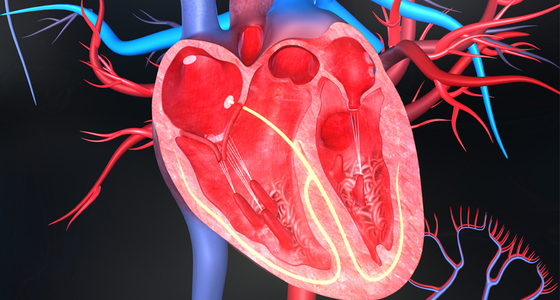Building a flexible cardiovascular (CV) ambulatory network is a crucial aspect of providing high-quality care to patients with CV conditions.
With an increasing number of patients seeking care in non-hospital settings, healthcare providers need to adopt a more flexible approach to CV care delivery to meet the changing needs of patients and physicians.
A flexible CV ambulatory network involves several key components:
Identifying patient needs: Healthcare providers must identify the unique needs of patients with CV conditions in their service area. This includes understanding the types of CV services that patients require, as well as the geographic locations where these services are needed.
Offering a range of services: A flexible CV ambulatory network must offer a range of services to meet the diverse needs of patients with CV conditions. This may include advanced diagnostic imaging, interventional cardiology, electrophysiology, and cardiac rehabilitation.
Developing partnerships: To build a flexible CV ambulatory network, healthcare providers must develop partnerships with other providers in their service area. This includes collaborating with primary care physicians, specialists, and other healthcare organizations to ensure that patients receive the care they need.
Utilizing technology: Technology plays a critical role in building a flexible CV ambulatory network. Healthcare providers must invest in advanced diagnostic imaging equipment, electronic health record systems, and telehealth capabilities to support their CV services.
Adapting to changing patient needs: Healthcare providers must be flexible in adapting their CV services to meet the changing needs of patients. This includes being responsive to changes in patient demand, as well as adopting new technologies and treatment approaches as they become available.
Providing convenient access: A flexible CV ambulatory network must provide patients with convenient access to care. This includes offering extended hours, same-day appointments, and telehealth options to ensure that patients can access care when they need it.
Focusing on patient experience: Healthcare providers must focus on providing a positive patient experience in their CV ambulatory network. This includes providing comfortable waiting areas, patient education, and clear communication about treatment options.
Ensuring quality and safety: Finally, healthcare providers must ensure that their CV ambulatory network delivers high-quality, safe care to patients. This includes implementing rigorous quality standards, ongoing staff training, and close collaboration with regulatory agencies.
The benefits of building a flexible CV ambulatory network are numerous. Healthcare providers that adopt a flexible approach to CV care delivery are able to:
Provide patients with more convenient access to care: A flexible CV ambulatory network offers patients a more convenient and accessible way to receive care. This can lead to improved patient outcomes and higher patient satisfaction.
Reduce healthcare costs: By providing CV services in outpatient settings, healthcare providers can reduce the need for hospital-based services, which are typically more expensive and resource-intensive.
Improve physician engagement: Healthcare providers that build flexible CV ambulatory networks are able to engage with physicians more effectively. This can lead to increased collaboration, communication, and innovation in CV care delivery.
Enhance competitive advantage: Finally, healthcare providers that build flexible CV ambulatory networks are better positioned to differentiate themselves from other providers in the marketplace. This can lead to increased patient referrals and market share.



